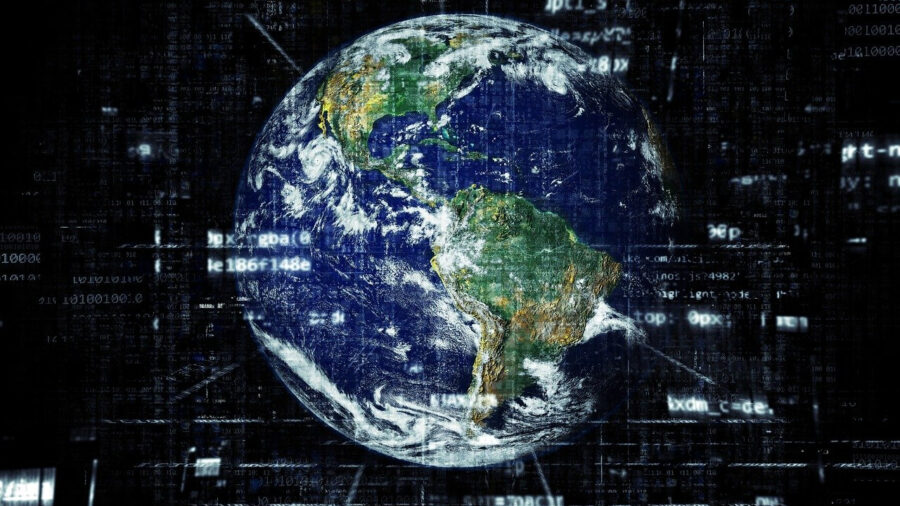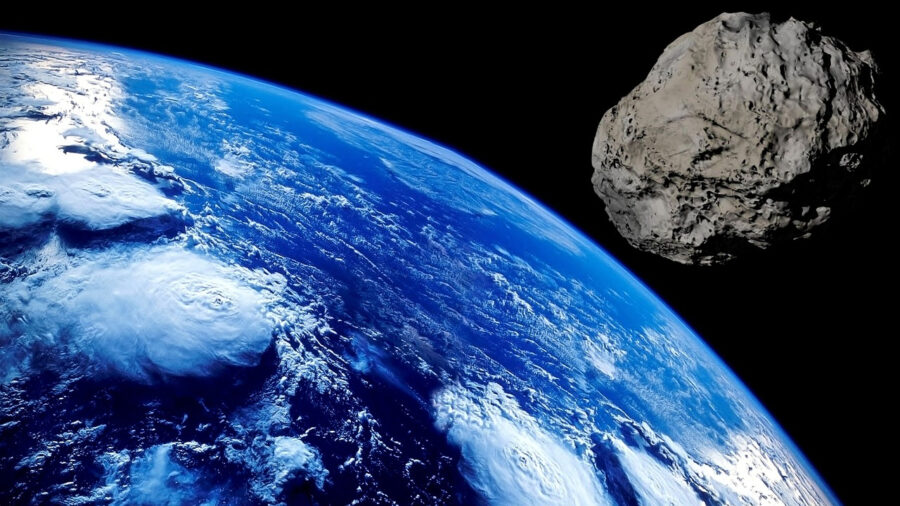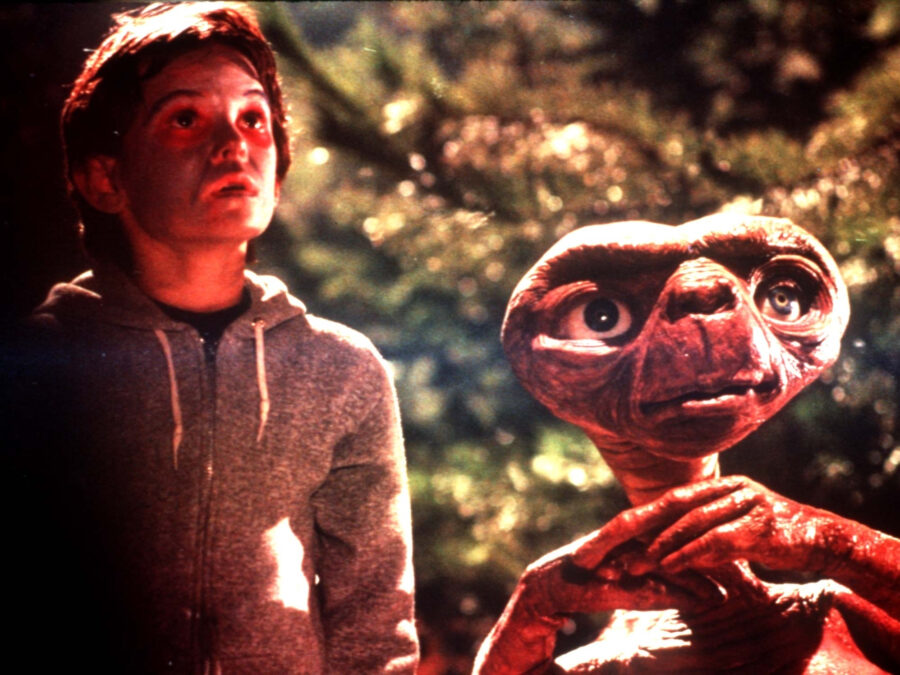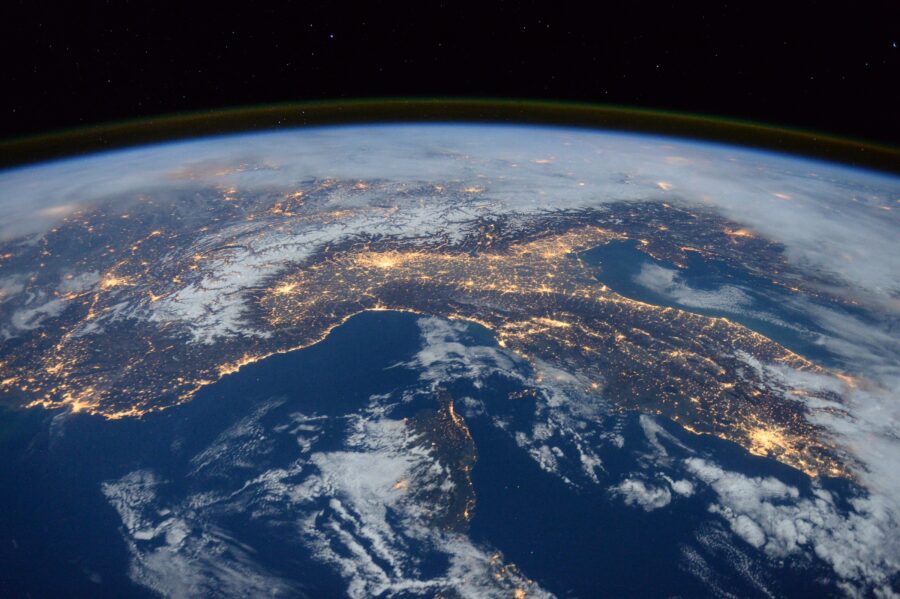A Secret Alien World Is Hiding Inside Earth
Researchers strongly believe another planet is under our feet.
This article is more than 2 years old

In a new study, scientists think that a Mars-sized planet collided with Earth during its infancy billions of years ago, which helped form Earth. These same scientists also believe that our very own moon was formed during this impact. Even more, the researchers believe that parts of this alien world still reside deep within our planet.
Back in 2016, researchers from UCLA proposed that Earth and another rogue planet called Theia (mother of the Moon) ran smack dab into each other causing the eventual formation of our living planet Earth. Now, Arizona State University’s Qian Yuan and his colleagues now believe that mysterious dense spots deep within the Earth’s crust are specific pieces of Theia.
Yuan and crew presented a paper at the 52nd Lunar and Planetary Science Conference explaining via Popular Mechanics, “Here, we demonstrate that Theia’s mantle may be several percent intrinsically denser than Earth’s mantle, which enables the Theia mantle materials to sink to the Earth’s lowermost mantle and accumulate into thermochemical piles that may cause the seismically-observed [dense areas].” The dense areas in question, which are located more than 1,000 miles under our Earth’s surface, are roughly continent-sized and called Large Low Shear Velocity provinces or LLSVPs. According to Yuan, the possible alien worlds are located under the Pacific Ocean and West Africa and measure in around hundreds of miles high and thousands of miles across, which makes them the largest formations in our Earth’s interior. “You could say that these are the biggest and largest meteorites, if they are mostly Theia’s mantle,” said Yuan via Vice. “It’s very cool.”

The ASU scientists were able to identify specific portions of the Earth’s interior while also modeling the process in which these large portions could have struck Earth, thus sinking into its core. “We define successful models in which the [Theia mantle materials] sink to the lowermost mantle and form into spatially isolated thermochemical piles that occupy 3-15% area of the 2D model domain, similar to the present-day LLSVPs which occupy ~3-9 vol% of the Earth’s mantle,” they wrote.
Yuan first started developing his hypothesis about the two planets colliding during a class he took at ASU taught by planetary geochemist Mikhail Zolotov. In class, Zolotov mentioned that a weakness of the “giant impact hypothesis” (how the moon was formed) was that no pieces of Theia have ever been discovered. “That really struck me, because at the time I was studying LLSVPs,” he said via Vice. “I knew that people were arguing that LLSVPs could be even older than the age of the Moon. When I got back to my office, I just did a very easy calculation where I compared the size of the LLSVPs to the mantle of Mars, because Theia was believed to be very similar to Mars,” Yuan continued. “The total mass of the Moon, together with the LLSVPs, is almost perfectly matched with Mars’ mantle.”
As he continued on with his theory, he noted initially that Theia would have to have been larger than Mars because much of the mantle material would have been lost in space upon impact. “You will lose some material during the impact, for sure,” Yuan said. “You cannot transfer Theia’s mantle whole.” Not to be dissuaded, Yuan moved forward with his research, speaking with his advisor and other experts in the field of the giant impact hypothesis. The more information he collected, the more he felt that an alien world was hiding deep beneath our surface.

Part of his research uncovered a 2019 study led by ASU astrophysicist Steve Desch which spoke in-depth about Moon rocks brought back to Earth by the Apollo missions. In it, the research suggested that Theia’s mantle contained low levels of moisture and was iron-rich and two to three percent denser than the Earth’s crust. As Yuan points out, LLSVPs have also been estimated to be two to three percent denser, strongly indicating that the large dense spots inside the Earth’s core could be parts of Theia. It was enough to convince Desch to co-author the new study.
To Yuan, it is mind-boggling to think that an alien world could be buried beneath the Earth’s surface. But how to prove the theory to be correct? It is possible that the researchers could get their hands on pristine samples of the moon in an effort to compare them with the LLSVPs. Granted, the dense spots are so deep within the Earth’s core that obtaining samples of those are virtually impossible, but their composition can be determined by seismic studies of their densities. “If people can find some chemical relationship between the lunar mantle materials with the LLSVPs, it may suggest they have the same ancestor: Theia,” Yuan said. “Otherwise, these two materials shouldn’t have any relationship. The LLSVPs are thought to be very old, and have noble gas isotopes,” he continued. “If the mantle rocks of the Moon also have similar noble gas isotopes, I think that’s the final task for our hypothesis.”
For years, scientists have often discussed a possible link between the dense zones deep within Earth and Theia but according to ASU professor and seismologist Edward Garnero, Yuan and crew’s study was the first time researchers were able to produce multiple lines of evidence suggesting the theory to be true. “I think it’s completely viable until someone tells me it’s not,” Garnero said via HuffPost.

If all this were true, just how has Theia been able to remain intact inside Earth for billions of years? It’s a simple combination of how Earth’s mantle works versus the density of the Theia remnants. The Earth’s movement circulates material that is a certain density and temperature. The large Theia spots are so dense that they sank inside the Earth and have never been able to float back up to the convection zone.
Chances are scientists will never have the ability to go so far into the Earth’s core to actually see this alien world, then again, science always seems to be up for a new challenge. Yuan and his group have gotten us this far, let’s see where they go from here.
You can watch Yuan speak about his alien world Theia hypothesis below.












